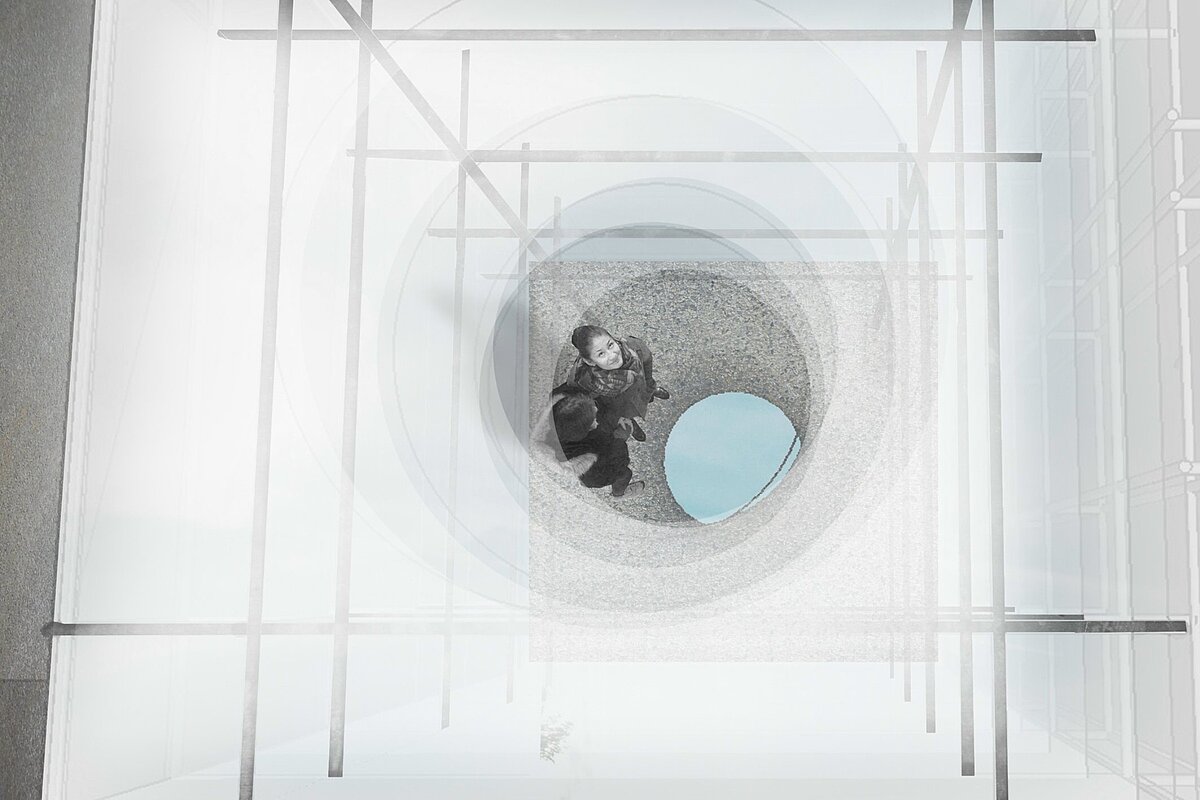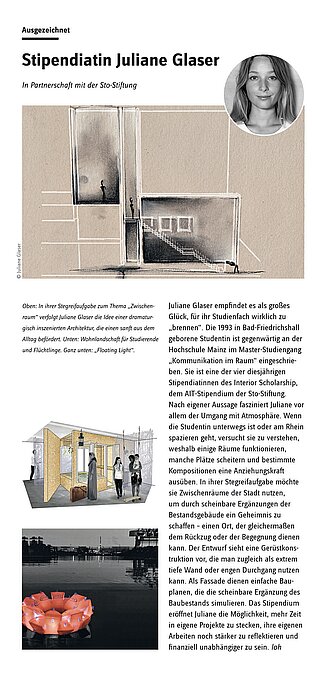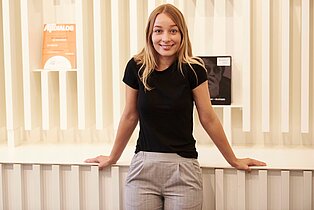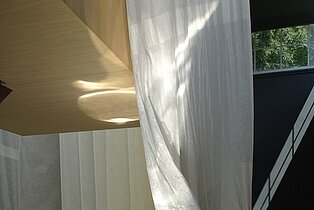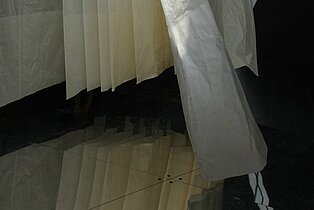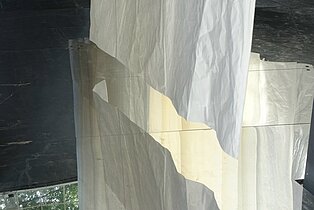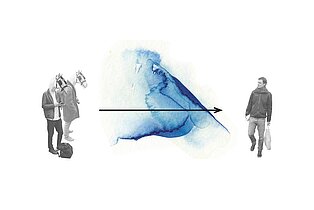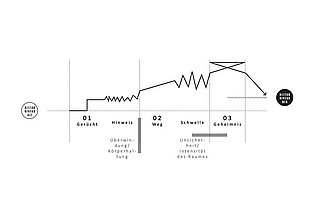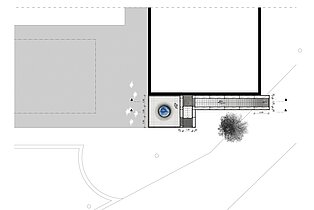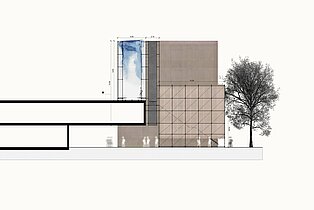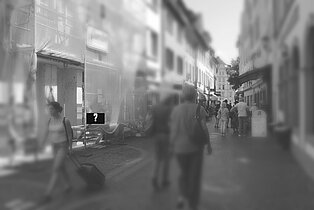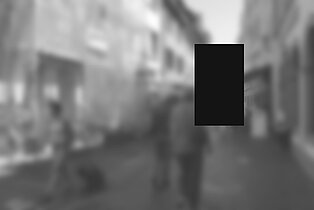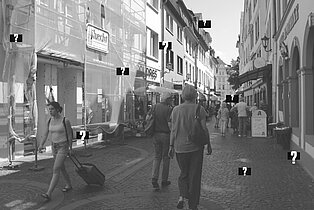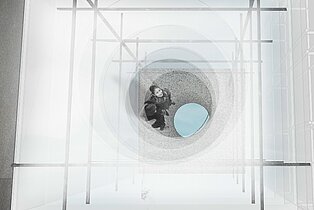Interior Scholarship | Blog 03/2018 | Juliane Glaser
With this dramaturgically staged draft architectural design, I would like to draw those who are willing to do so away from the everyday. I drew my inspiration from various sources, including the impressive work of Es Devlin. With her ‘Mirror Maze’ project for Chanel, she created a space capable of conducting a dramatic charge of this intensity, enabling the visitor to sense for a moment that they have stepped through time and into the past. In addition, I was aided by the exciting discussions held with my colleagues about the dramaturgical content of the library of Exeter von Louis I. Kahn. It is fascinating to learn of the means by which dramatic tension can be crafted within physical spaces, and just how diverse the resultant ambient moods can then become! This discussion gained a special resonance when we also included the ‘Burning Man’ festival in our comparisons. It is crazy to witness how even just the application process for the tickets and the price drive excitement upwards… The long and arduous trek through the desert lifts that sense even higher. For me, that notion of ‘the journey’ is one of the most powerful tools in dramaturgy, and it does not have to be the many hours of travel through the desert, as it is for ‘Burning Man’, nor does it have to be the experience of James Turell’s ‘Heaven on Earth’. Instead, it may also take the form of a simple ramp. Dramaturgy can be invoked with a short stroll. One is on the move, and thus able to perceive things from different perspectives. Therein lies a tantalising sense of infinity just beyond our ability to grasp it.
The excitement of discovery.
Inquisitiveness. The intimacy of a secret.
For my project on the topic of ‘Dramaturgy in Space’, I took as my dramaturgical element ‘The Secret’. Everyone fashions secrets and would wish to be initiated in them, despite the fact that it is so often difficult to support the weight they impose upon us. As children, who among us could resist that compelling urge to enter secret rooms, to occupy them, to protect them, and to defend them with life and soul? A secret is something Absolute. Something Majestic. When you are initiated into a secret, you become one of that intimate inner circle, The Chosen Ones, those who know more than others. When the fabric of spaces and places is interwoven with secrets, a special kind of electrifying atmosphere is generated. Not dissimilar to the impact of The Forbidden. Breaking into a building site at night, a place full of concealed spaces. An unsigned glade far away from signposted trails. A small, unknown and alluring café of the kind that you only ever encounter when you stroll through that town for the first time. An unexpectedly sumptuous and sparkling bathroom in a somewhat dubious restaurant. An empty bench in an inconspicuous tranquil courtyard.
I love stories. Whether true or fictitious, they have the power deep within us to awaken concealed emotions, to be experienced for a moment, and that can, even if only for a short period of time, spirit us away from the here and now. What remains are the memories and the places, people and special moments that occur within them or that we spontaneously imagine into being. Can architecture be created in which precisely these elements are grasped, and communicated into a physical space?
Deeply entangled in this question, I set about once again to craft my answer from the concept of seizing the impromptu, and have drawn on the context of this year’s AIT scholarship from the STO Foundation to explore this in greater depth through ‘Intermediate Space’:
You first hear of a rumour. One surmises that there is a secret space in your town, a concealed place that camouflages itself as a building site. Whether consciously or subconsciously, that rumour expands your tunnel vision. Then you suddenly become aware of the floating staircase protruding towards you below a rather unusually structured set of scaffolding. You home in on that sense of slight irritation and you change direction to approach that staircase. The closer you approach, the louder the gusting wind becomes, ensnared within that shaft. You cannot see a door. Then you stoop carefully under the tarpaulin, bowing before the Unknown. Then you break through to daylight.
With trepidation, you step onto the staircase. And with your gaze rooted to the dark aperture in the wall, you step forwards and outwards, leaving the everyday behind you. What began with The Rumour and The Sign is now followed by The Way. I use the depth of the wall structure to cause space to concentrate within that dark aperture, the unknown secret high in the wall. Along the path you sense the tingle of excitement before you learn of a secret.
The threshold space manifests itself as a shaft, or as a chimney. By looking upwards or downwards, you can view everyday life as though from a great distance. Within this intense space, you are also pervaded by the power of a secret.
The secret, the secret space, is not directed at the people who may enter it. It is instead a very atmospheric space, one that radiates tranquillity.
The walls, like those lining the path, are almost opaque, cocooning you altogether from the everyday. Your only reference point is the view of the sky and of the light of day. Therein you sense the intimacy of a secret.
From this point onwards, you continue through the everyday with the same eyes, just as you did before, except that now even a subtle anomaly can arouse your enquiring mind, and transport your thoughts to a secret that is perhaps concealed just beyond the tangibility that our senses can grasp…
X minutes, x hours, x days later, I would dearly love to once again craft the concept of materialisation of the intangible, and to be in contact with those gigantic and intriguing tarpaulins once more. Would it not be rather wonderful to let those long tarpaulins billow like well-tended sails in the wind that passes through the scaffolding? Would that in fact serve as a satisfactory pointer, enabling me to relinquish the detail with my staircase with a sense of internal peace? Are we obliged to experience the way back differently from the way there? I ask myself whether one can present oneself several times with the same challenges, or whether one should instead throw oneself into new ones… For now, I shall satisfy my curiosity by engaging in a new one.
About Juliane Glaser
Juliane Glaser is one of the four winners of the Interior Scholarship grant issued by AIT and the Sto Foundation. She provides the following tip for other students: "Scholarships allow you a bit more freedom to help combat the significant pressure during your studies. You will therefore have more time for your own projects, as well as activities outside and within the university."
After completing a bachelor's degree in interior design, Juliane Glaser is now doing a master's degree course (Communication in Space) at the Mainz University of Applied Sciences. In 2017, she completed a 6-month internship at an architecture office in Mannheim. After her studies, her aim is to become a self-employed interior designer. The Interior Scholarship grant will allow her, amongst other things, to undertake a foreign internship in Switzerland and provide her with more time for her own projects.


